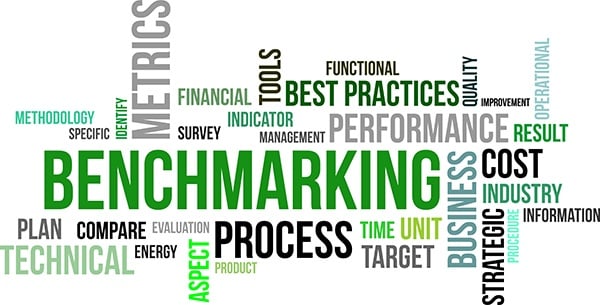
The secret to boosting your corporate real estate portfolio performance is using the proper benchmark. Measuring the portfolio on the basis of the numbers it posts rather than the subjective performance it delivers is one way to do this. Here are five ways to apply a benchmark to your unique locations in order to improve performance.
1. Rent to Sales
The "sine qua non" of corporate real estate measurements for retail is the rent to sales ratio. It's also useful for public facing offices like those used in some financial services companies or even medical spaces. The lower the rent to sales ratio, the more value you're getting out of your space. Extending the benchmark by looking at a rent per gross profit ratio can also help you determine the types of customer a given space attracts.
2. Employees per Square Foot
The employee per square foot metric is useful for offices, call centers, and other corporate real estate assets used primarily to hold employees rather than to directly generate revenue. The metric can also tell you which of your spaces are efficient from a design and utilization perspective. This benchmark can also be adjusted by employee salary or by employee level. For instance, a corporate office will probably have fewer employees per square foot than a call center. Looking at total employee salary per square foot may help to norm out for this variance.
For more info on employees per square foot, check out this article.
3. Utilization Ratio
Measuring the effectiveness of your warehouse quickly leaves the realm of corporate real estate and enters the realm of operations and logistics. However, if you're looking at real estate metrics, the key is utilization ratio. By dividing the average volume of stored products by the total volume of your warehouse's cube space, you can quickly figure out which warehouses are right sized and which are too small or too large.
For more on warehouses, check out this article:
3 Quick Fixes to Shrink Warehouse Occupancy Costs.
4. Environmental Benchmarking
If your business is concerned with the ecological impact of its corporate real estate portfolio, look at benchmarks that compare energy use. One useful metric is KWh consumed per square foot. If your building separates power used for HVAC from the power that you use for lighting and in-office equipment, it's a particularly meaningful metric since you can compare it across regions. Otherwise, you may need to make some adjustments. For instance, your Phoenix office will need to use more energy in the summer than your Seattle or Anchorage office due to air conditioning.
Click here for tips on reducing costs by improving environmental sustainability.
5. Competitive Benchmarking: Rent/CAM to Market
Given good market data, you can quickly benchmark what you pay for each of your locations relative to everyone else in the area. Even if your space is doing well on every other benchmark, if there are comparable spaces that rent for 5, 10 or 20% less, you're paying too much.
When you look at your corporate real estate occupancy cost, look both at rent and CAM. One classic landlord trick is to offer a low rent to disguise a high CAM cost - some of which may include hidden landlord profit, like management and administration fees or the cost of maintenance performed by landlord-owned companies. In the same vein, consider benchmarking on a usable square foot basis after adjusting out for the load factor. This can help you to see what you're paying for the space you actually occupy, as opposed to the space including hallways and common areas.
View other tips for your Commercial Real Estate Portfolio:
How to Manage Your Commercial Real Estate Portfolio
Utility Benchmarking Tips to Reduce Occupancy Costs
Commercial Real Estate Portfolio Consolidation Strategies








